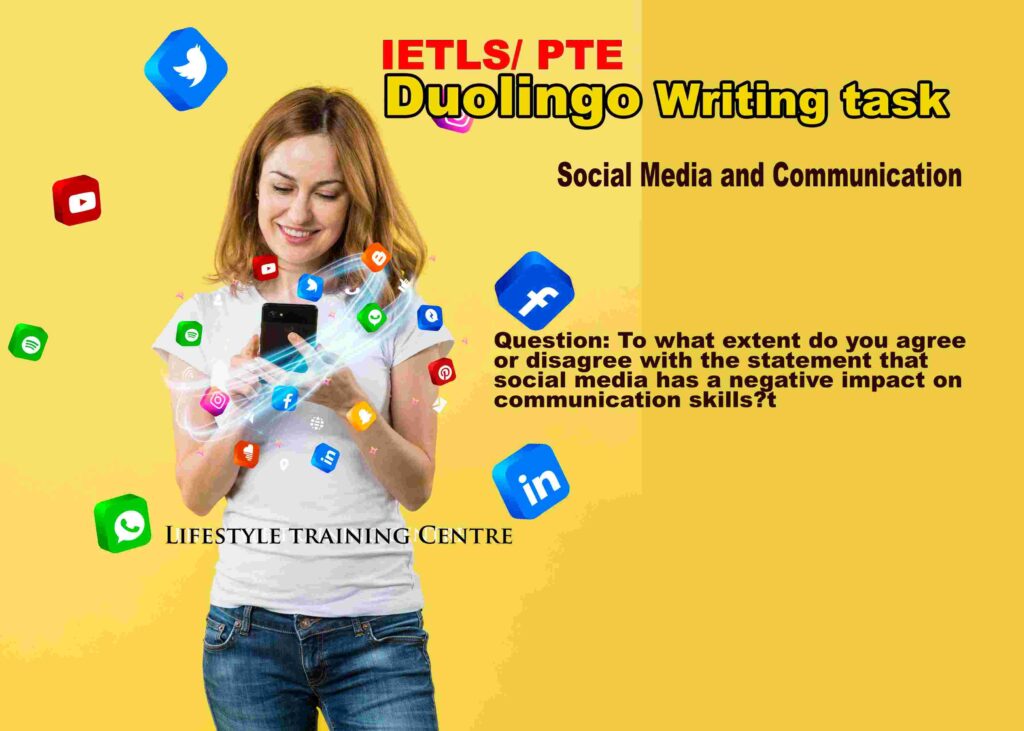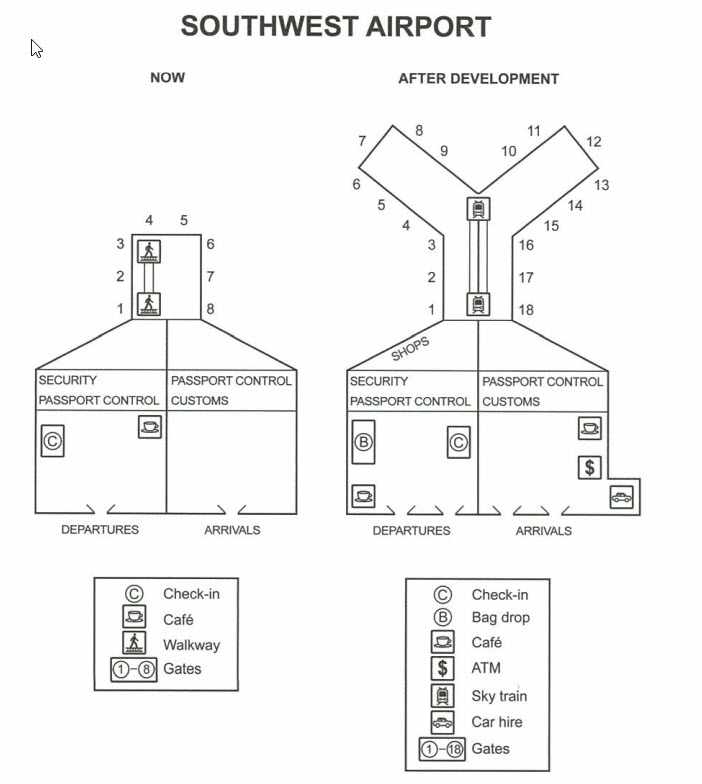Duolingo / PTE / IELTS agree or disagree essay

Model answer by Lifestyle Training Centre
The prevalence of social media in today’s digital era is undeniable. I wholeheartedly disagree with the assertion that it negatively impacts communication skills. On the contrary, I believe that social media significantly enhances our ability to communicate effectively.
Firstly, social media has revolutionized the way we connect with others, transcending geographical boundaries and linguistic barriers. Platforms such as Facebook, Instagram, and WhatsApp have enabled people from diverse backgrounds to interact, share information, and exchange ideas instantaneously. This level of interconnectedness was unfathomable in the pre-digital era. The ability to share thoughts and ideas at lightning speed fosters not only rapid but also efficient communication.
Moreover, the integration of advanced technological features, such as video and audio calls, texting, and chatrooms, into these platforms has provided users with various means to express themselves. Even individuals who might lack traditional communication skills find these tools invaluable for socializing and honing their abilities. This is particularly true for younger generations who have grown up with social media and are adept at conveying their thoughts and understanding information in a way that older generations might not be. Furthermore, social media serves as an excellent educational tool. It offers a plethora of resources for learning and improving communication skills, from online courses to interactive discussions. Users can engage in meaningful dialogues, participate in forums, and receive feedback, all of which contribute to the development of their communication competencies.
In conclusion, social media, when utilised appropriately, is a powerful tool for enhancing communication skills. It promotes global interconnectedness, provides diverse platforms for expression, and serves as an educational resource. We, therefore, must take full advantage of the benefits it offers while remaining mindful of the potential drawbacks and using it responsibly.
List of vocabulary used:
- Prevalence: The fact or condition of being widespread or prevalent; commonness.
- Undeniable: Unable to be denied or disputed.
- Wholeheartedly: Fully or completely sincere, enthusiastic, energetic, etc.
- Assertion: A confident and forceful statement of fact or belief.
- Negatively: In a way that is not desirable or optimistic.
- Contrary: Opposite in nature, direction, or meaning.
- Significantly: In a sufficiently great or important way as to be worthy of attention.
- Revolutionized: Changed (something) radically or fundamentally.
- Transcending: Going beyond the range or limits of something.
- Geographical: Relating to geography or to the physical features of an area.
- Linguistic: Relating to language or linguistics.
- Interconnectedness: The state of being connected with each other.
- Diverse: Showing a great deal of variety; very different.
- Instantaneously: Occurring or done instantly, at once.
- Unfathomable: Incapable of being fully explored or understood.
- Pre-digital: Before the widespread use of digital technology.
- Fosters: Encourages or promotes the development of something.
- Integration: The process of combining or adding parts to make a unified whole.
- Technological: Relating to or using technology.
- Invaluable: Extremely useful; indispensable.
- Socializing: Mixing socially with others.
- Honing: Sharpening or refining (a skill).
- Adept: Very skilled or proficient at something.
- Expressing: Conveying (a thought or feeling) in words or by gestures and conduct.
- Conveying: Making (an idea, impression, or feeling) known or understandable to someone.
- Interactive: (Of two people or things) influencing or having an effect on each other.
- Resources: Sources of support or supply.
- Meaningful: Having meaning; full of meaning; significant.
- Engage: Participate or become involved in.
- Dialogues: Conversations between two or more people as a feature of a book, play, or film.
- Forums: Places, meetings, or mediums where ideas and views on a particular issue can be exchanged.
- Competencies: The ability to do something successfully or efficiently.
- Sophisticated: Developed to a high degree of complexity.
- Structure: The arrangement of and relations between the parts or elements of something complex.
- Minimum: The least or smallest amount or quantity possible, attainable, or required.
- Word requirement: The specified number of words required in a piece of writing.
We hope this information has been valuable to you. If so, please consider a monetary donation to Lifestyle Training Centre via UPI. Your support is greatly appreciated.

Would you like to undergo training for OET, PTE, IELTS, Duolingo, Phonetics, or Spoken English with us? Kindly contact us now!
📱 Call/WhatsApp/Text: +91 9886926773
📧 Email: [email protected]
Visit us in person by following the directions on Google Maps. We look forward to welcoming you to the Lifestyle Training Centre.
Follow Lifestyle Training Centre on social media:
Thank you very much!
